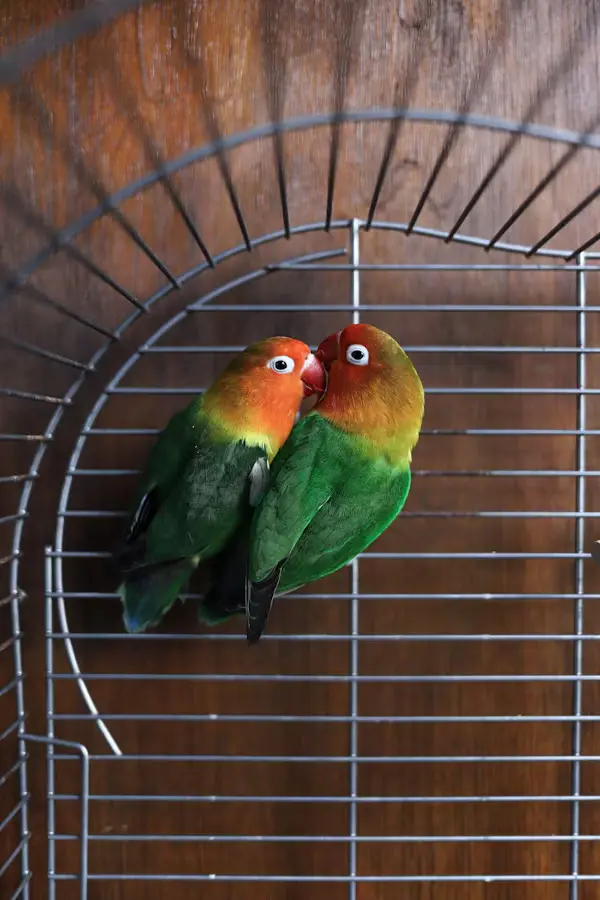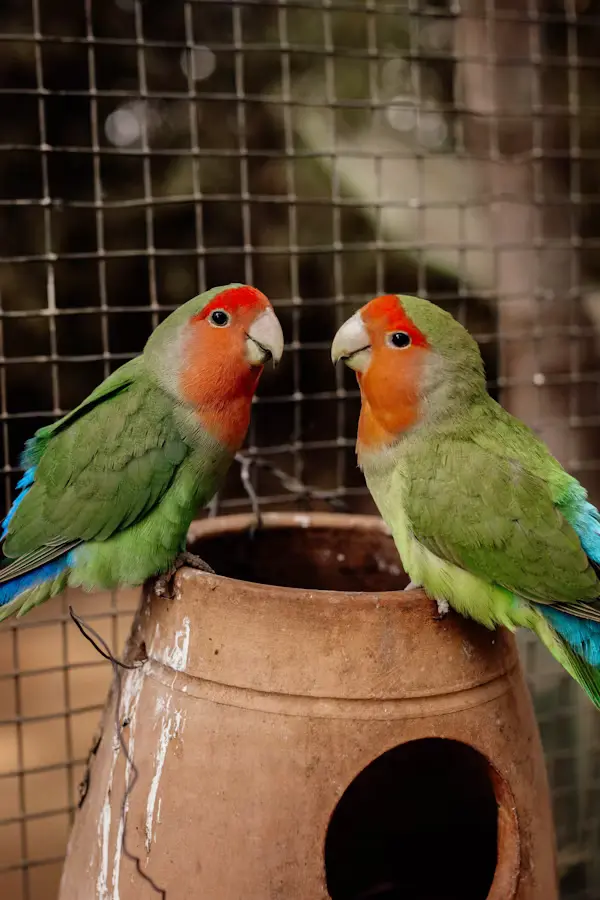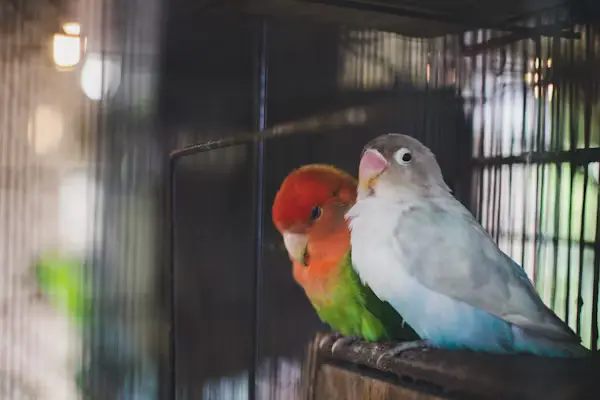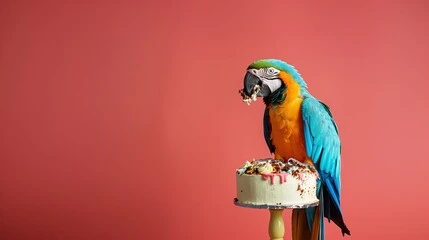Cages for Lovebirds: Best Ultimate Guide to Safe, Heartwarming Spaces

Remember the first time you saw a lovebird? Those vibrant colors, the playful energy, the sweet chirping… it’s instantly captivating. You want to create a wonderful life for your new feathered friend, and that starts with choosing the right home. Selecting the right cages for lovebirds can feel overwhelming, but it doesn’t have to be. This guide will walk you through everything you need to know to ensure your lovebird thrives in a safe, stimulating, and comfortable environment.
Table of Contents
Why the Right Cage Matters So Much

Lovebirds aren’t just pretty faces; they’re intelligent, active little parrots. They need a space that allows them to exhibit their natural behaviors – climbing, playing, foraging, and socializing (even if that socializing is just with you!). A cramped or poorly equipped cage can lead to boredom, stress, and even health problems. Think of it this way: their cage is their entire world, most of the time. You want to make that world as enriching as possible. As members of the parrot family, providing adequate space is incredibly important for their physical and mental wellbeing – much more than simply providing a perch to sit on.
Understanding Lovebird Cage Size
Let’s get down to specifics. Cages for Lovebirds size is often underestimated. Too many well-intentioned owners opt for a cage that’s simply too small.
Here’s a breakdown:
- Single Lovebird: Minimum dimensions should be 18” x 18” x 18” (45.7cm x 45.7cm x 45.7cm). However, bigger is always better.
- Pair of Lovebirds: At least 32” x 20” x 20” (81cm x 51cm x 51cm) is essential. Again, a larger cage allows for more natural movement and reduces territorial disputes.
- Flight Cages: If you can accommodate it, a flight cage (typically larger than 60” wide) provides the most space for exercise and play.
Pro Tip: Consider the shape of the cage. Wider cages are generally better than taller ones, as lovebirds prefer to move horizontally.
| Cage Type | Single Lovebird (Minimum) | Pair of Lovebirds (Minimum) |
|---|---|---|
| Standard | 18″ x 18″ x 18″ | 32″ x 20″ x 20″ |
| Flight | 24″ x 24″ x 24″ | 60″ x 30″ x 30″ |
Exploring Different Lovebird Cage Types
There’s a surprising variety when it comes to lovebird cage types. Here are a few common options:
- Standard Square/Rectangular Cages: These are the most common and available in various sizes. They’re a good starting point, but pay attention to bar spacing (see “Lovebird Cage Safety” below).
- Dome-Top Cages: The rounded top can provide a more open feel, but ensure the dome doesn’t restrict access for cleaning and toy placement.
- Playtop Cages: Feature a play area on top of the cage, offering additional space for your lovebird to climb and play. These are excellent for active birds.
- Flight Cages: As mentioned earlier, these are the largest options, offering ample space for flight and exercise. They are especially beneficial if your lovebird spends a significant amount of time in its cage.
- Travel Cages: Smaller, portable cages for vet visits or short trips. These are not suitable for long-term housing.
The Importance of Bar Spacing: Lovebird Cage Safety

Lovebird cage safety is paramount. One of the most crucial aspects is bar spacing. Lovebirds have small heads, and if the bars are too widely spaced, they can get their heads stuck, leading to injury or even death.
- Ideal Bar Spacing: ½ inch (1.27cm) is the maximum recommended bar spacing for lovebirds. Smaller is even better, especially if you intend to offer a variety of toys and climbing opportunities.
- Material Matters: Avoid cages made with lead, zinc, or galvanized metal, as these are toxic to birds. Stainless steel or powder-coated steel are much safer options.
- Avoid Sharp Edges: Carefully inspect the cage for any sharp edges or points that could injure your bird.You can find more information on safe materials at Bird Cages 4 Less.
Creating an Enriching Environment: Lovebird Cage Accessories
An empty cage is a sad cage! Lovebird cage accessories are essential for keeping your bird mentally stimulated and physically engaged. Think about what they’d do in the wild and try to replicate that.
- Perches: Provide a variety of perches in different sizes, shapes, and materials (wood, rope, concrete). This helps exercise their feet and prevent arthritis. Varying diameters is crucial!
- Toys: This is where you can really get creative! Offer a rotating selection of toys, including:
- Chew Toys: Wood, balsa, and shreddable toys satisfy their natural urge to chew.
- Foraging Toys: Hide treats or pellets inside toys to encourage problem-solving.
- Swinging Toys: Provide entertainment and exercise.
- Ladder Toys: Encourage climbing and exploration.
- Food and Water Bowls: Stainless steel is the most hygienic option. Consider multiple feeding stations to prevent competition if you have a pair.
- Bathing Options: Lovebirds enjoy bathing. Provide a shallow dish of water or a bird bath a few times a week.
- Cuttebone or Mineral Block: Provides essential calcium and helps keep their beak trimmed.
Keeping it Clean: Lovebird Cage Cleaning
Regular Cages for Lovebirds cleaning is vital for your bird’s health. A dirty cage can harbor bacteria and lead to respiratory problems or other illnesses.
- Daily: Change the cage liner (newspaper, paper towels, or bird-safe bedding) and wipe down any soiled perches or toys.
- Weekly: Remove and wash all bowls, perches, and toys with hot, soapy water. Disinfect the cage bars and bottom.
- Monthly: Deep clean the entire cage, including a thorough disinfection.
Important: Never use harsh chemicals or abrasive cleaners, as these can be harmful to your bird. Vinegar and water is a safe and effective cleaning solution.
Where to Place Your Lovebird’s Cage: Lovebird Cage Placement

Cages for Lovebirds placement is often overlooked, but it’s crucial for their well-being.
- Avoid Drafts: Keep the cage away from windows, doors, and air vents.
- Good Lighting: Ensure the cage receives adequate natural light, but avoid direct sunlight, which can cause overheating.
- Social Interaction: Place the cage in a room where you spend a lot of time, so your lovebird feels included in the family.
- Height Matters: Position the cage at eye level or slightly above. This helps your lovebird feel secure and dominant.
- Away from Kitchen Hazards: Cookware fumes (especially Teflon) are toxic to birds. Keep the cage well away from the kitchen.
Frequently Asked Questions (FAQ) about Cages for Lovebirds
Q: What’s the absolute minimum Cages for Lovebirds size for a single lovebird?
A: While 18” x 18” x 18” is the absolute minimum, you should aim for larger if possible. A more spacious cage will allow your lovebird to exercise and exhibit natural behaviors.
Q: Can I use any type of bird toy?
A: Not all toys are created equal. Avoid toys with small, easily detachable parts that could be swallowed. Choose toys made from bird-safe materials.
Q: How often should I replace toys in the cage?
A: Rotate toys regularly to keep your lovebird entertained. Replace worn or damaged toys immediately.
Q: My lovebird keeps chewing on the cage bars. Is this a problem?
A: Chewing on cage bars can indicate boredom or a lack of enrichment. Provide more chew toys and ensure the cage is adequately stimulating. It could also indicate the bar spacing is too wide so they’re trying to widen it.
Q: Is it okay to put the cage directly on the floor?
A: It’s generally not recommended. Being on the floor can make your lovebird feel vulnerable and expose them to drafts and potential hazards. Use a sturdy stand to elevate the cage.
Final Thoughts: Creating a Happy Home for Your Lovebird
Choosing the right cages for lovebirds is more than just a purchase; it’s an investment in your bird’s health, happiness, and overall well-being. By carefully considering size, type, safety features, and enrichment opportunities, you can create a haven where your lovebird can thrive for years to come.
Do you have any questions about choosing the perfect cage for your feathered friend? Share your thoughts and experiences in the comments below! And don’t forget to explore our other articles on bird cage toys and general bird care for more helpful tips and advice. Let’s work together to give our lovebirds the best possible lives!






